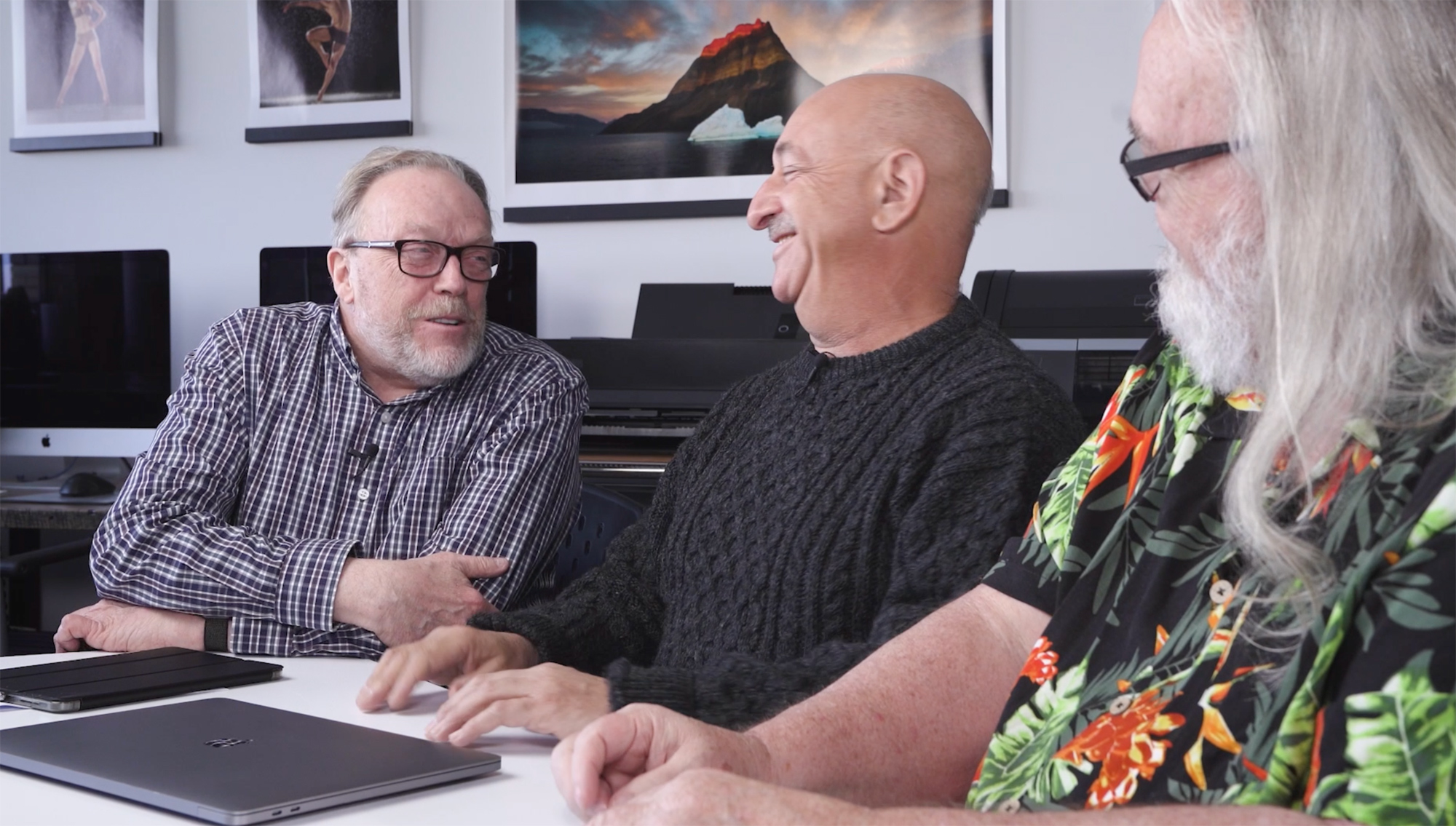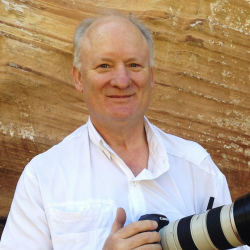Home > Topics > Site and Board Matters > New Article Announcements & Discussions > Ink Jet Paper Surfaces and How Paper is Made – PXL Print Series
Ink Jet Paper Surfaces and How Paper is Made – PXL Print Series
Tagged: epson, Fine Art Printing, printing, video
-
AuthorTopic: Ink Jet Paper Surfaces and How Paper is Made – PXL Print Series Read 7722 Times
-
New Article Announcements & Discussionson: January 5, 2022 at 1:55 pm
I have now shared the next video in our Print It series. In this video, we discuss paper surfaces, how paper is made, and OBA’s. Check it out HERE.

Kevin Raber
Owner and Publisher of photoPXLRe: Ink Jet Paper Surfaces and How Paper is Made – PXL Print SeriesReply #1 on: January 5, 2022 at 2:49 pmThis is a good, and also entertaining segment – much appreciated. Having visited one of the paper mills in Europe of the type that Dano was talking about, there’s an important aspect I think deserves a mention, and that is “quality control”. At the mill I visited, I was struck by the number of quality control check points there are in the process of making the substrate from the receipt of the cotton linters into the mill till the rolls of paper came out the other end. The pass/fail tests at that particular facility are stringent and result in a lot of rejected and recycled material at various stages of the process. Then the substrate rolls were sent to another plant for coating, and brought back for converting, which involves a lot of transportation of these huge heavy rolls of paper forth and back, then out to market, where two levels of distribution at least come into play – the distributor and the retailer each with their margins. So between the basic costs of the raw materials, mill overheads, wages, the wastage due to quality control, the transportation and the need to finance distribution and sales (and advertising), you can begin to see the dollar bills adding up and understand why the truly high-quality papers tend to be costly. That’s one insight I thought worth mentioning. The paper, by the way, is much costlier than the ink when you make an inkjet print using high-quality materials. I know this from careful modeling and tracking of the costs of inkjet printing going back years.
Another important aspect – maybe it will come up in future videos – is that of matching the character of the coating with the character of the photo. The basic technical distinction between matte and luster/gloss papers is that the matte varieties have grayer Black points and less gamut than the luster/gloss varieties, but they do have a nice non-reflective look and feel to them that many people appreciate. So depending on the needs of the photo and the taste of the printer or the print buyer as the case may be, this choice of coating makes an important contribution to the artistic impact of the print. Again, the quality control of the coating is critical because that is what people see – ink on the coating – when they look at a print, on top of which the last thing we want is for the coating to flake off the substrate over time. It’s a complicated product and industry.
Re: Ink Jet Paper Surfaces and How Paper is Made – PXL Print SeriesReply #2 on: January 5, 2022 at 7:58 pmMarvelous video and comment by Mark that left me wanting to know more.
I thought I knew something but now I feel like a newbie again!!
Well done all!
Terry
Terry Colorado USA [email protected] www.terrygipsonphotography.com
Re: Ink Jet Paper Surfaces and How Paper is Made – PXL Print SeriesReply #3 on: January 5, 2022 at 9:59 pmI’m pretty sure Epson Legacy Baryta II is not OBA-free. I’m basing my assertion on some knowledge of how this product is sourced, on my own confirmed evaluation of other recent “Baryta II” industry formulations like Canson Infinity Baryta Photographique II, and even on conflicting information found on the Epson USA website (where the product is referred to on one webpage as OBA-free, but on another as having “minimal OBAs”. However, supply chain issues facing consumers today make it nearly impossible to buy here in the U.S. at the moment, so I can’t confirm beyond all doubt whether it is or isn’t OBA-free until I can actually obtain some and evaluate it myself. Perhaps Dano Steinhardt can clarify this question for us.
All that said, the elephant in the room is what OBAs actually do to “archival properties” of the printed artwork, and in this regard this PXL video tends to follow the traditional thinking, i.e., that OBAs aren’t all that bad and when they fade they merely lose fluorescence and the paper itself doesn’t yellow. This rationale is regrettably sugarcoating the reality. For one thing, the viewer is seeing the yellowing of the inkjet coating layers, not so much what’s going on with the paper base sheet which is what this video focused upon for the most part. For another thing, over the last decade research has demonstrably shown that OBAs don’t merely fade to colorless compounds. There are many popular media in the marketplace today where the image yellowing goes significantly beyond what we can expect merely from the loss of OBA fluorescence as the OBAs fade. Epson Exhibition Fiber Paper is a good example, and virtually all RC photo media are proof as well. I’m not trying to single out Epson in any way. It’s an industry wide issue with respect to OBA properties in modern media. And to underscore that point, if you do happen to own a John Sexton or Ansel Adams silver gelatin print containing OBAs, my best advice is to treat it like it’s a fugitive color print even if it is an “archival” selenium toned silver gelatin photograph. Limit its total exposure on display over time to 10 megalux hours (approximately 5 years on continuous display at 450 lux/12 hours per day, 10 years at 225 lux, 20 years at 110 lux, 40 years at 50 lux, etc.) or less if you want to keep the image highlights of these works of art in pristine condition for many decades to come!
kind regards,
Mark-
This reply was modified 2 years, 6 months ago by
Mark McCormick-Goodhart. Reason: typos
-
This reply was modified 2 years, 6 months ago by
Mark McCormick-Goodhart.
Re: Ink Jet Paper Surfaces and How Paper is Made – PXL Print SeriesReply #4 on: January 6, 2022 at 9:52 amMark, I’ll be happy to address this with Dano. It was mentioned in the video that a simple blacklight will show if a paper has OBA in it. I’ll be at the studio tomorrow and will run some blacklight tests. I have a bunch of different papers and I’ll see what happens. I think Dano wouldn’t say anything that wasn’t true so I’d also take his word. Give me a bit to investigate as I am curious.
Kevin Raber
Owner and Publisher of photoPXLRe: Ink Jet Paper Surfaces and How Paper is Made – PXL Print SeriesReply #5 on: January 6, 2022 at 10:08 amThe unfortunate circumstance of Epson Legacy Baryta II paper is that it was supposed to come to market about a year ago; but it got delayed. There was however a very brief window of time in which I was able to obtain a sample quantity and test it. I have not submitted my article on this paper for publication because I want to time the publication of my review for when people can actually buy it. As my readers may recall, one of the first things I test for is OBAs, and I can confirm that based on my reading of the spectral curves from measuring Paper White in i1Profiler this paper has none. As well, Epson has publicly confirmed this here: https://epson.com/pro-photo-legacy-papers.
Re: Ink Jet Paper Surfaces and How Paper is Made – PXL Print SeriesReply #6 on: January 6, 2022 at 11:19 amGlad to hear about your findings, Mark. Great if printmakers will eventually be able to choose more OBA-free fine art media in the “Baryta” category. That said, IMHO Epson still needs to clarify its OBA-free messaging for the new Baryta II product. Please see the specifications listed for it here: https://epson.com/For-Work/Paper/Pro-Imaging/Legacy-Baryta-II/m/S450095 A close look at the claimed specs on this web page states “minimal OBAs” not “OBA-free”, thus contradicting what one reads about the product at https://epson.com/pro-photo-legacy-papers.
cheers,
Mark McCormick-
This reply was modified 2 years, 6 months ago by
Mark McCormick-Goodhart.
Re: Ink Jet Paper Surfaces and How Paper is Made – PXL Print SeriesReply #7 on: January 6, 2022 at 11:57 amGood find Mark, and that is one Epson needs to look at – definitely somewhat contradictory within their own messaging. If indeed there are “minimal OBAs”, those OBAs are so minimal that my i1Pro 3 spectro was incapable of picking them up. So then the question would be about the impact such “minimal levels” could have over a long period of time – your area. But first Epson should clarify.
Re: Ink Jet Paper Surfaces and How Paper is Made – PXL Print SeriesReply #8 on: January 6, 2022 at 2:04 pmIf indeed there are “minimal OBAs”, those OBAs are so minimal that my i1Pro 3 spectro was incapable of picking them up.
Trace levels of OBA do sometimes end up in production lots, often as a consequence in the paper making step where the tailings of prior production run get tossed back into the pulping slurry of the next production run designated to be OBA-free. Those trace levels don’t really pose a quality problem and color measurements won’t pick them up. Sometimes you can detect them with a UV led as little flecks of fluorescence in the paper base, but again, not a quality control issue to be concerned about which is why some paper mills elect to re-pulp some of the scrap from an earlier production run. Also, I see this trace contamination at at a higher level more often with canvas and linen making, not so much with paper making. Again, not really a problem for final product quality.
“Minimal levels of OBA” really deserves to be noted when the OBA content is indeed intended to visually tweak the final media color, even if only by a very small but nevertheless measurable and visually detectable amount. The loss of that “minimal” fluorescence over time isn’t too serious unless the product also contains TiO2, and then these combined components contribute to further yellowing when the print gets taken off display and placed in dark storage. And the only way to know for sure how serious the yellowing will be is to conduct a proper light fade/dark storage test. Or, as a pragmatic approach if you are a printmaker, avoid this OBA/TiO2 induced media yellowing conundrum altogether by seeking out truly OBA-free media. Consumers can’t easily test for the presence of TiO2, but we can easily check for OBA content using UV leds. Thus, the practical printmaker’s approach to best practices for “archival” printing is simply to learn to print on slightly warmer OBA-free papers and appreciate the aesthetics of the wide variety of truly OBA-free media that are available today.
Re: Ink Jet Paper Surfaces and How Paper is Made – PXL Print SeriesReply #9 on: January 6, 2022 at 2:39 pmMark and Mark…..
Thanks for a great discussion of this issue
Re: Ink Jet Paper Surfaces and How Paper is Made – PXL Print SeriesReply #10 on: January 7, 2022 at 12:36 pmThanks for a great video. I’m really looking forward to seeing more.
Just like to say that over here in England (English English) we say bareeta not bareyeta.
But then we say boot not trunk and pavement not sidewalk…
It’s good to be different.
Re: Ink Jet Paper Surfaces and How Paper is Made – PXL Print SeriesReply #11 on: January 7, 2022 at 2:03 pmYes, you folks are different. You spell color wrong as well as drive on the wrong side of the road.
Kevin Raber
Owner and Publisher of photoPXL -
This reply was modified 2 years, 6 months ago by
-
AuthorPosts
- You must be logged in to reply to this topic.





